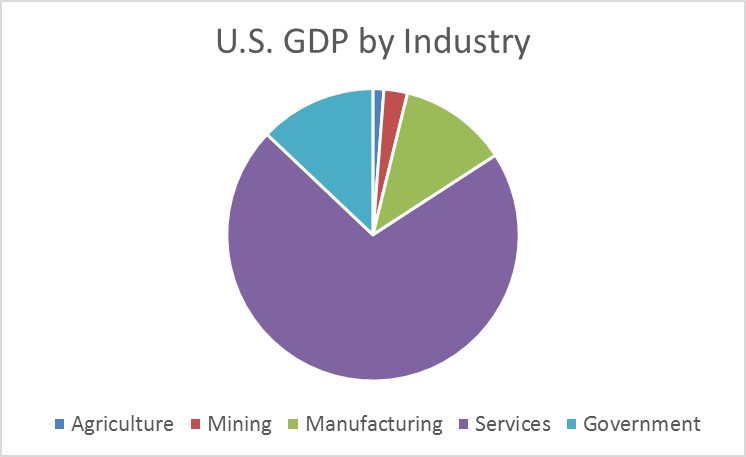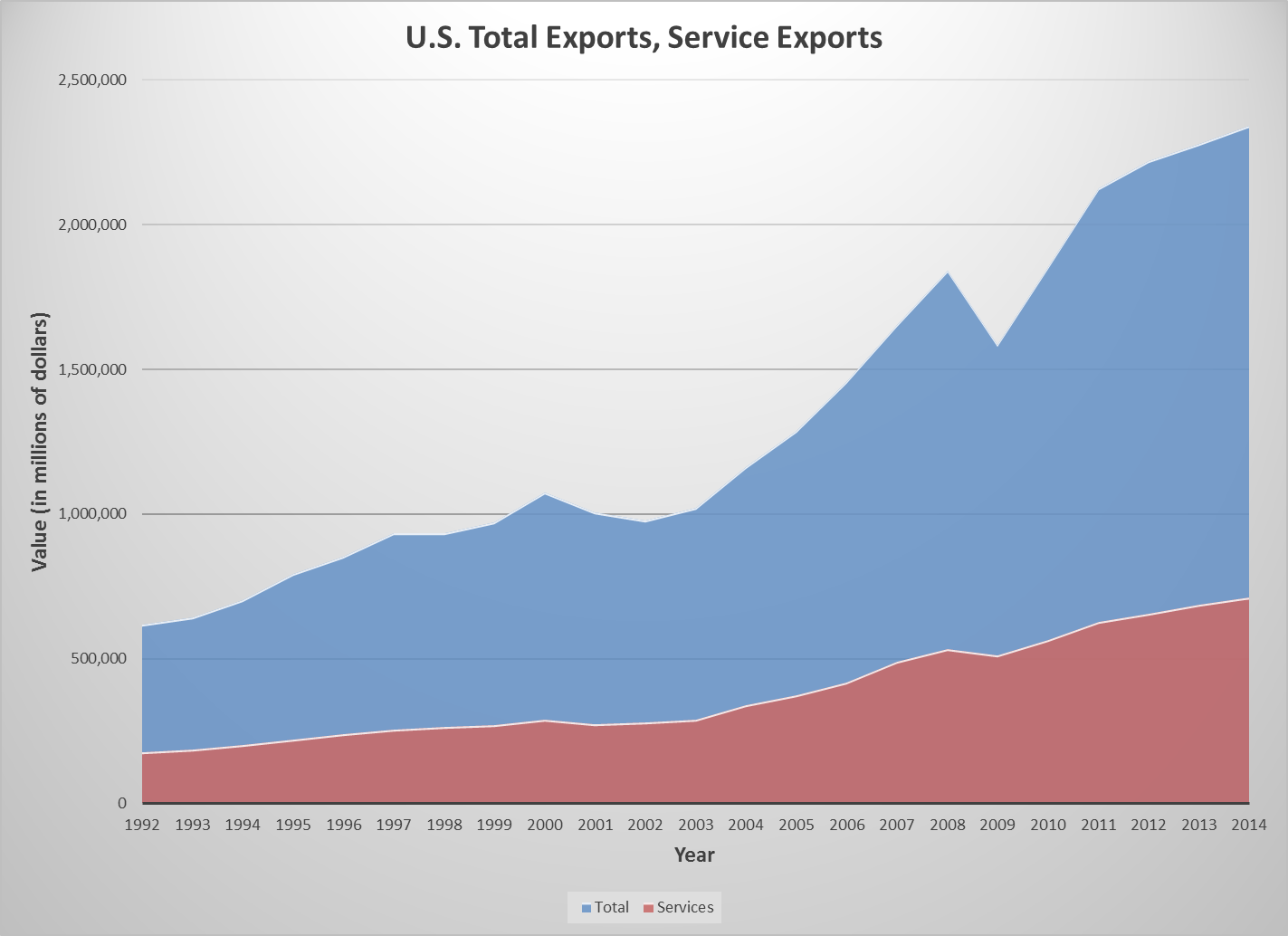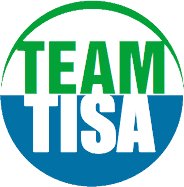Much of the world economy is powered by services. The services sector is the world's largest employer, with nearly 3.3 billion people working in services industries. The services sector accounts for 70% of global GDP, while close to 20% of global trade involves services. Trade in services has grown at a pace faster than trade in goods since the 1980s. UNCTAD estimates that in 2013 global services exports reached $4.7 trillion and grew at an annual rate of 5%. Overall, services trade has grown by 95% since 2000.
World Bank research shows that the services sector has become a dominant driver of economic growth in developing countries, delivering both GDP growth and poverty reduction. In 2011, the services sector accounted for, on average, 49% of GDP in the low income countries and 47% in least developed countries (LDC). Services have also accounted for nearly two-thirds of the world’s total FDI stock in 2010.
Services Benefit America
The United States is the world’s largest single-country exporter and importer of services. Even though less than 5% of U.S. service companies currently export, services are almost 30% of total U.S. exports. Furthermore, services generate more than 75% of national economic output.

2014 data from U.S. Bureau of Economic Analysis
In 2013 the United States exported over $681 billion in services, resulting in a $231 billion surplus. Annual services exports in 2013 grew by $31.8 billion. Annual services imports in 2013 grew by $12.9 billion.

Data from US Census Bureau
The service sector is the largest employer in the United States. 76% of the U.S. workforce was employed in the services sector in 2013. The USTR estimates that every 1 billion dollars of services sales support 4,000 American jobs. The average annual salary of an individual employed by a firm involved with international services is $60,000. In contrast, the national average manufacturing salary is $40,000.
In addition to the statistics for the US as a whole, the Coalition of Service Industries website has graphics on services jobs and exports in individual states and districts.
The Services Trade and TiSA
The TiSA has the potential to tackle non-tariff barriers which hinder services businesses from trading across borders, including improving market access, ensuring the movement of data across borders, and guaranteeing national treatment rules, among many others. Reducing or eliminating non-tariff barriers is especially crucial for small-and-medium-sized enterprises (SMEs), who largely depend on digital trade to export their services and reach new customers. A study by a leading economist found that only 3 percent of services firms export, as compared to a quarter of manufacturers, largely because of foreign barriers. An estimated 3 million jobs could be created if U.S. services matched the export rate of manufacturers. TiSA, by addressing unfair barriers, can help make that happen.
All economies and businesses need efficient services to be competitive in today’s global economy, especially if they are to plug into the global supply chains that are the predominant phenomenon in international trade. The TiSA gives all businesses a chance to be successful in today’s global market and has the potential to create high standard trade rules which encompass the digital revolution and future innovations.
Tags: trade, services, international, jobs, economy
